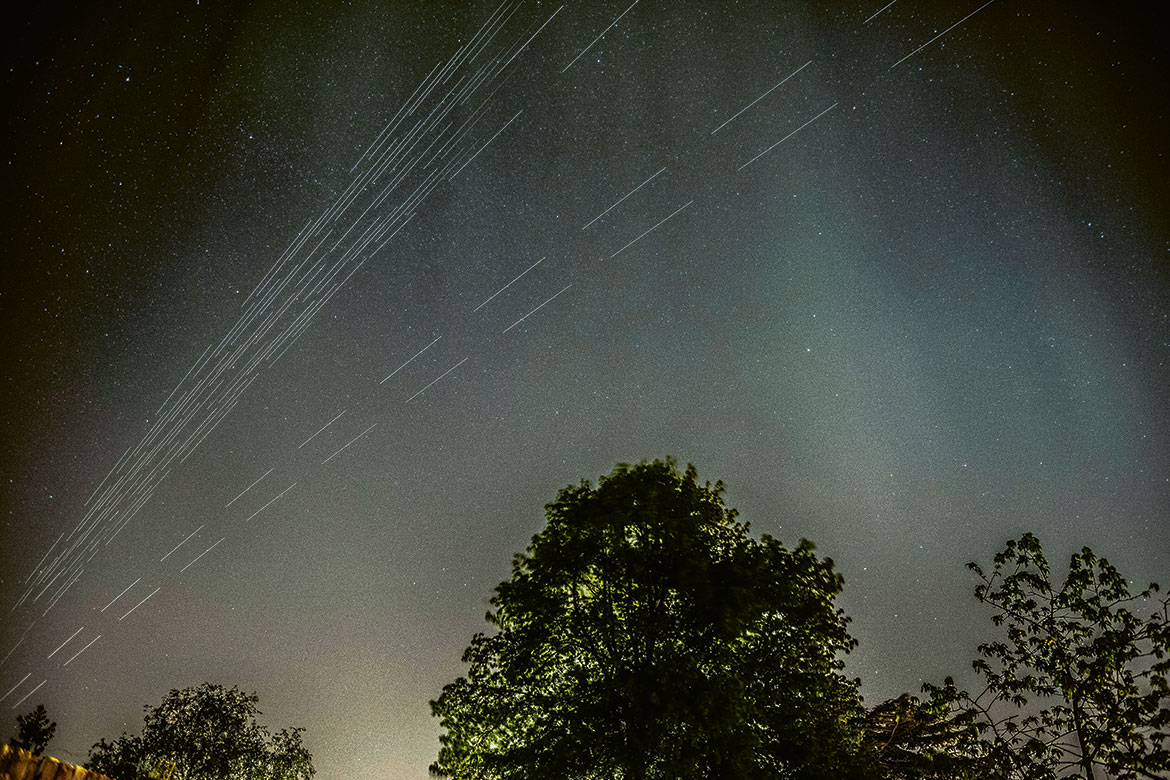SATELLITES
Starlink: Using visors to combat light pollution
Satellites are being equipped with sun visors so that they shine less brightly.

Too bright? Light trails of 19 satellites with a 333 second exposure. | Image: NSF’s National Optical-Infrared Astronomy Research Laboratory/CTIO/AURA/DELVE
Since the first Starlink satellites were sent into orbit in May 2019, astronomers have been complaining that they cause optical interference – both to laypeople who want to observe the night sky, and to experts with more sensitive instruments. For this reason, Elon Musk’s company has made a change before sending its tenth load of 260 kg satellites into orbit: “All Starlink satellites on this flight are equipped with a deployable visor to block sunlight from hitting the brightest spots of the spacecraft”. Because these visors are made of foam plastic, they are transparent to radio waves. The launch of this new generation of satellites was planned for June 2020, and after several delays finally went ahead on 7 August 2020.




